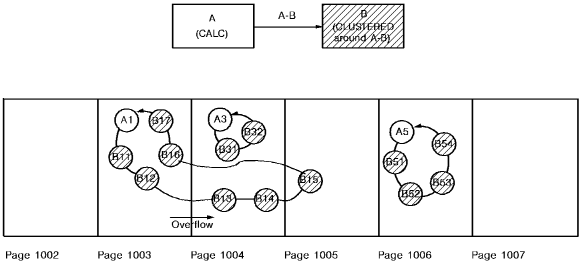

If the page size for a database area is not large enough to hold an entire cluster of entity occurrences, cluster overflow conditions may occur. Cluster overflow occurs when the DBMS cannot fit a new entity occurrence on the same page as other entity occurrences in the cluster. Cluster overflow forces the DBMS to try to store the entity occurrence on the next page in the area.
Suppose an area contains one entity, A, stored CALC, and one entity, B, which is clustered through the A-B relationship. One A and four B occurrences fill a page. In the instance shown in the diagram, one of the A-B clusters contains two B occurrences, one contains four occurrences, and one contains seven occurrences. Since there isn't room for the seven occurrences on one page, the extra occurrences have had to overflow to pages 1004 and 1005. To retrieve all occurrences in the cluster requires three accesses.

Reducing cluster overflow
You can reduce cluster overflow by:
|
Copyright © 2014 CA.
All rights reserved.
|
|